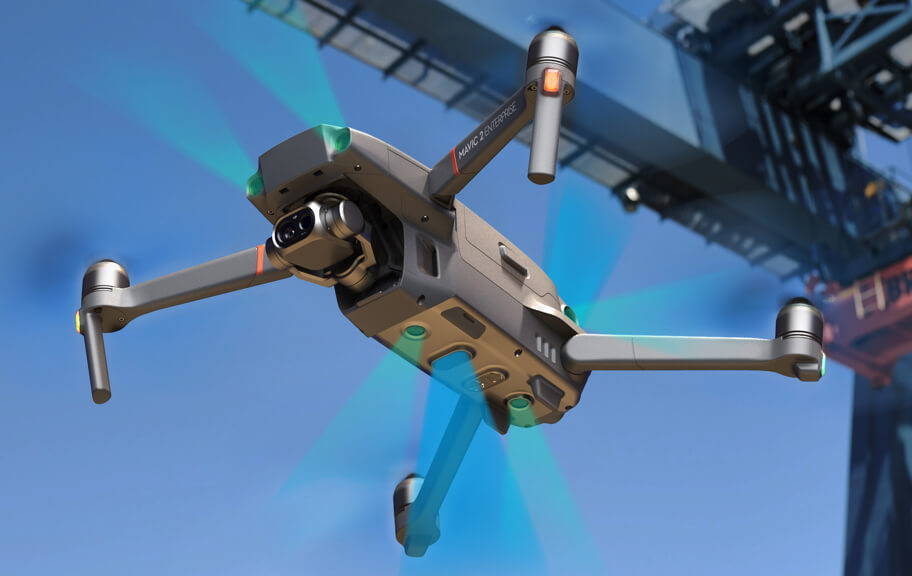DJI Mavic 3 Series Compared: Classic vs Pro vs Pro Cine The DJI Mavic 3 series delivers powerful aerial performance with cutting-edge imaging and flight features. However, choosing between the Mavic 3 Classic, Mavic 3 Pro, and Mavic 3 Pro Cine can be tricky. In this guide, we break down the differences to help you decide which model fits your creative goals best. Mavic 3 Classic: Flagship Quality Without the Frills Design and Flight Performance The Mavic 3 Classic weighs just 895 grams and folds neatly to 221×96.3×90.3 mm, making it perfect for travel and outdoor shoots. Despite its compact size, it delivers up to 46 minutes of flight time and hovers for about 40 minutes. Thanks to its shared battery system, it’s compatible with the rest of the Mavic 3 series. In Sport mode, it can reach speeds of 21 m/s and resists winds up to 12 m/s. Moreover, with GPS, GLONASS, and BeiDou support, it ensures smooth, stable flights. Camera and Imaging Power This model features a Hasselblad L2D-20c camera with a 20MP 4/3 CMOS sensor. You’ll get a 24mm equivalent lens and a variable aperture from f/2.8 to f/11, which allows more control over your shots. Additionally, it supports 12-bit RAW and JPEG formats, giving you a wide 12.8-stop dynamic range for deep color and detail. Video Capabilities The drone records 5.1K video at 50fps and 4K at 120fps, using H.264 or H.265 at a 200 Mbps bitrate. It supports Normal, 10-bit D-Log, and HLG color profiles, making it a solid option for semi-professional editing. However, it lacks Apple ProRes, which is exclusive to the Cine version. Transmission and Smart Modes The Mavic 3 Classic uses the O3+ transmission system, streaming live video in 1080p/60fps up to 8 km. It also includes intelligent flight modes like ActiveTrack 5.0, QuickShots, Hyperlapse, and Panorama to enhance creativity with ease. Obstacle Avoidance and Safety Equipped with six fisheye and two wide-angle sensors, the drone offers omnidirectional sensing. It uses APAS 5.0 for real-time obstacle avoidance and safe flight. Plus, features like Advanced Return to Home, AirSense (ADS-B), and GEO 2.0 geofencing ensure added airspace safety. Best For If you want premium Hasselblad image quality without the need for multiple lenses or ProRes, the Mavic 3 Classic is a top-tier yet budget-conscious choice. Mavic 3 Pro: Versatile Shooting with Triple Cameras Triple-Camera Power The Mavic 3 Pro includes the same main Hasselblad camera as the Classic, but adds two more lenses: With this setup, you can switch between wide, medium, and long focal lengths without changing drones or lenses—perfect for creators who want more flexibility on the fly. Video and Color Profiles Both the wide and medium telephoto cameras support 10-bit D-Log and HLG, offering vibrant HDR and post-production flexibility. Meanwhile, the long telephoto lens supports standard color profiles and is great for zoom effects or inspections. Also, with up to 28x digital zoom, you can capture distant details with incredible clarity. Flight Time and Intelligent Features Just like the Classic, the Mavic 3 Pro offers 46 minutes of flight time and features O3+ transmission, APAS 5.0, and omnidirectional obstacle sensing. Intelligent modes like ActiveTrack and Hyperlapse remain part of the package. Best For The Mavic 3 Pro is ideal for content creators and professionals who want a full range of focal lengths without swapping equipment. ProRes Video Format The Mavic 3 Pro Cine shares the same triple-camera array as the Pro, but it takes video capabilities further by supporting Apple ProRes 422, 422 HQ, and 422 LT. These professional-grade formats offer 10-bit 4:2:2 color depth—essential for cinematic workflows and post-production. Storage and Workflow Speed With a built-in 1TB SSD, you can shoot and store large ProRes files without needing external drives. This simplifies the editing process and speeds up your production pipeline. Same Reliable Performance Like the other two models, the Pro Cine offers 46-minute flight time, O3+ transmission, APAS 5.0, and full obstacle sensing for top-tier flight safety. Best For If you’re a professional filmmaker working on commercial shoots, documentaries, or high-end YouTube videos, the Pro Cine gives you the tools needed for broadcast-quality footage and efficient editing. Side-by-Side Comparison Table Feature Mavic 3 Classic Mavic 3 Pro Mavic 3 Pro Cine Weight 895g 958g 958g Main Camera 4/3 CMOS Hasselblad Same Same Additional Cameras None 48MP (70mm), 12MP (166mm) Same Video Resolution 5.1K/50fps, 4K/120fps Same Same + Apple ProRes Storage microSD only microSD only 1TB Internal SSD Color Profiles D-Log, HLG D-Log, HLG D-Log, HLG, ProRes Digital Zoom Limited Up to 28x Up to 28x Best Use Case Solo Creators, Travel Versatile Shooters Professional Filmmaking Compared to… The Classic is one step above DJI’s Air 2S (which has a 20MP Type-1 CMOS sensor plus shorter flight time), and a half-step down from the Mavic 3 Standard and Cine models. Those wanting a variable aperture and longer flight time might consider upgrading from an Air 2S, while others who aren’t prioritizing zoom capabilities or Apple’s ProRes 422 HQ (High Quality) codec will likely feel that the Classic is more than satisfactory for many scenarios. Mavic 3 Classic Mavic 3 Standard Mavic 3 Cine Air 2S Price $1,469 (Standalone)$1,599 (RC-N1 remote)Fly More Kit an additional $649 $2,049 (RC-N1 Remote)$2,849 (Fly More Combo) $4,999 (Premium Combo) $999 (RC-N1 Remote)$1,299 (Fly More Combo) Camera 20MP Four Thirds CMOS sensor24mm equiv. F2.8–11 20MP Four Thirds CMOS sensor24mm equiv. F2.8–11 20MP Four Thirds CMOS sensor24mm equiv. F2.8–11 20MP Type-1 sensor22mm equiv. F2.8 (fixed) Zoom 1–3X digital zoom Hybrid: 1–4X digital zoom on main camera, up to 28X digital on telephoto Hybrid: 1–4X digital zoom on main camera, up to 28X digital on telephoto 1–4X digital zoom Video Transmission OcuSync 3.0 (O3), 4 antennas, 15 km, 1080p/60p OcuSync 3.0 (O3), 4 antennas, 15 km, 1080p/60p OcuSync 3.0 (O3), 4 antennas, 15 km, 1080p/60p OcuSync 3.0 (O3), 4 antennas, 12 km, 1080p/30p Video resolution 5.1K/50p, DCI or UHD 4K/120p 5.1K/50p, DCI or UHD 4K/120p 5.1K/50p, DCI or UHD 4K/120p 5.4K/30p, 4K/60p Video bit-rate 200 Mbps (H.264) /










